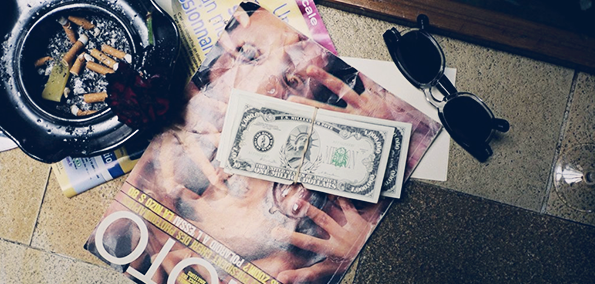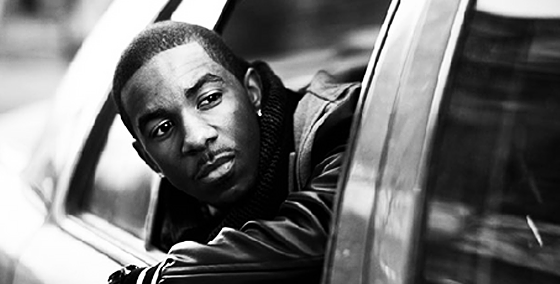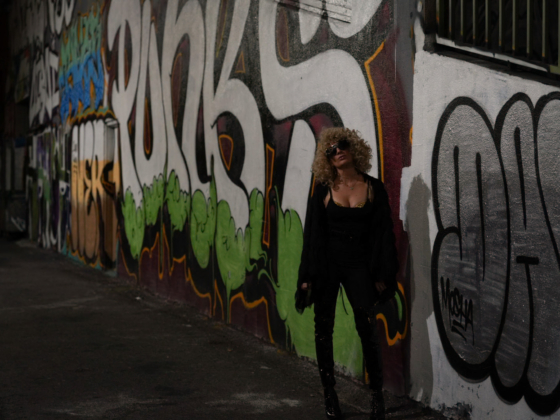There have only been a few electronic instruments that have reached that level of elevation within the musical pantheon to be recognizably referred to by their proper names. Alongside the old standbys of guitar, bass, trumpet and the rest of traditional American instrumentation, only the likes of the Moog, the Mellotron, and a few lucky others represent the electronic contingent – the rest are just generically labeled as “synths” and “drum machines,” hand-waved away as alike in sound and function. However, in terms of both popularity and recognizability, one electronic entry stands out against virtually every other – the Roland TR-808.
It's almost not even worth describing the 808's sound, because it's so instantly recognizable – its low, booming subs and skittering percussion have been the de-facto sound of hip-hop and dance for the last ten years or so, and an important building block of pop music since well before that. In fact, as the Venn diagram between hip-hop and dance music smooshes itself ever closer to an all-inclusive circle, trap and EDM producers at its center have adopted the storied drum machine as a sort of unofficial symbol for the genre – one illustrative of both its historical roots and its contemporary signature sound. It's come to the point where trappers have even named themselves after the 808, Southside's 808 Mafia of course serving as the most recognizable example.
So much of contemporary hip-hop culture is centered on the 808, but the ubiquity of the little black box only serves to obfuscate one of the least acknowledged and most unabashedly weird phenomena in modern music:
No one actually knows what the Roland TR-808 sounds like. In fact, most musicians probably haven't ever even seen one in real life.
Striking? Absolutely, but also a little obvious – of course most of the so-called “808” that appears in contemporary recording is sampled, probably downloaded illegally from some torrent site or off some hopeful producer's Freesound.org account. We intellectually know this, even if we haven't necessarily considered all of its implications. Sampling is old news – it's one of the foundational traditions of hip-hop, one of the unique qualities which has helped our genre grow to become the most globe-spanning, progressive musical movement of all time in just three or four decades, depending on how you count it.
The war is over now, and hip-hop's pretty much won. I'm not questioning that, but if sampling has become the norm, if musicians are expected to compose not with notes, but with ideas and symbols, then the old canonized music theory isn't going to cut it anymore. We need a new music theory; we need to figure out exactly what the proliferation of these techniques means for the rap community now that they have become the norm rather than the challenge to it. Consequently, taking a critical eye to this sort of new media composition must begin with the act of sample-based production in it's most common form – in the search for the most basic sounds from which a track is comprised.
For starters, what is a sample?
On the surface level, a sample is any piece of audio captured from one source for use in another, but the issue here is that the what of the sample is in part defined by the how and the why. I think most bedroom musicians, if you asked them why they now overwhelmingly create sample-based compositions, would respond that their production techniques have arisen out of necessity – the sounds that they want, whether a simple 808 kick or an entire gospel choir, are too expensive, rare, or inaccessible to acquire in their original form. Instruments are expensive, the argument goes, but everyone's got a laptop. With a free DAW and some included sampling software, you can make pretty much anything.
This point of view, however, sells the art of sample-based composition short. Thanks to the actual Renaissance-level of innovation within the domain of computer music software within the last ten years or so, we've forgotten exactly how hard it was historically to do any kind of sampling. When I listen to old rap records, with the “Amen break” and Fairlight samples reappearing in basically every song, it seems kind of quaint. At this point, sampling is taken for granted, so it's easy to forget just how groundbreaking and innovative a lot of that stuff coming out of the early '80s actually was.
Because of our current technological frame of reference, because contemporary digital sampling is so easy, we assume that this has always been the case, and therefore that sampling has always essentially been a matter of technical convenience. However, this is somewhat untrue. Remember that classic sample-based producers were not only limited to expensive and restrictive hardware, a far cry from today's drag-and-drop capabilities, but also were forced to navigate the undeveloped copyright law system that later codified around the yet-unprecedented technique. Sampling, while more convenient and less expensive than, say, hiring a session musician, was certainly not without its considerable risk.
Furthermore, in the late '70s and early '80s, before the advent of hardware-sampling technology, proto-producers sill chose to sample other performers' work. Of course, they did it the old fashioned way – they re-recorded others' compositions for their own arrangements, oftentimes lifting them directly.
The oft-cited "Rapper's Delight", generally recalled as the first commercially viable rap song, was realized in 1979 and is one of the first charting hits to utilize sampling, despite the fact that samplers didn't even exist at the time. Instead, Sugarhill Gang bassist Chip Shearin had to play the bassline for Chic's "Good Times" without mistakes for 15 minutes straight while they recorded the song in a single take. In short, people were sampling before it was really convenient for technical reasons. Consequently, even if we say that's why most composers are sampling now, it's probably not the whole story.
Shearin could have changed a single note on that bassline and avoided the eventual lawsuit from Chic, which forced the Gang to share writing credits with their disco progenitor. It wouldn't have even been any less convenient, because they still had to record the entire track without the assistance of sampling technology. However, he still chose to appropriate that identical bassline. Clearly, there is some evidence for creative intentionality here; a reason to use a particular sample rather than a sound-alike. Sampling is a creative or interpretive act, not just a technical necessity.
In addition to being a sound, a sample is also a symbol. Borrowing some terms from comparative literature, we might say that a sample has both text and subtext – a sonic meaning as well as a referential one. Media creators understand that each sound, in addition to functioning as an aesthetic element of the composition, also evokes a specific tone. Maybe the Sugarhill Gang chose to sample Chic because they wanted to specifically recall the danceability and party-centricism of disco. Kanye is one of the masters of sample-as-symbol, cutting loops from some of the most historically significant tracks in black music (see "Otis", "Blood on the Leaves") to illustrate that he considers himself part of that same legacy.
With that in mind, let's return to the 808 for a little bit. It's an analog drum machine, meaning that it generates its tones through electronic circuitry on the fly, as opposed to a digital drum machine like the Linn Drum that generates its output by accessing pre-existing samples from a hard drive. Digital drum machines are ostensibly closer to the collective-consensus idea of sampling.
But, if a sample is really just a symbol, a sound that represents or recalls something else, it's not a stretch to consider something like the 808 as a sampler in and of itself. I mean, come on – that 808 kick, clap, and especially that extremely silly cowbell, none of its generated sounds actually resemble the standard drum-kit sound that they're intended to imitate. The sounds of the 808 are stylized representations of percussion sounds.
Nonetheless, somehow each sound has become clearly recognizable as analogous to what it's supposed to represent. We call that long, bass-y blip a “kick,” despite the obvious reality that no one's actually kicking anything to produce it. Even though the 808's weird mid-heavy “clap” sound is absolutely divorced from the real world sounds known as a handclap, it proved so popular that nearly every subsequent drum machine has attempted to emulate that particular voice. Although the 808 clap is the farthest thing from a handclap, through use and repetition, it has become one.
The proliferation and use of the most recent crop of 808 samples is evidence of a similar phenomenon. Despite varying significantly from the standard board output of a Roland TR-808 drum machine, the sound of these samples has ultimately been confused for, supplanted, and ultimately replaced the sound of the genuine 808.
For reference, some unprocessed, real 808 snares sound like this:
Whereas processed, sampled “808” snares can sound like this:
A surprising shift to be sure, but countless repetitions and appropriations of processed samples instead of board-feed 808 by producers and musicians in absence of “the real thing” ultimately moved the goal posts on what it means to be an 808. While this shift isn't intrinsically bad, it's illustrative of what I'm calling the Golden Rule of Sample Based Production:

The use of a sample fundamentally creates meaning. When you use the same element in the same way enough times, this is pretty much certain. It's how language is made, it's how stereotypes are formed, it's how human beings learn things. Consequently, under the new paradigm, the new music theory, producers must become preoccupied with what meanings they are attempting to create, what narratives their productions acknowledge.
To take the 808 analogy a little further, the 808 has been repetitively used so many times, in so many hip-hop records, that it has developed a meaning intrinsically associated with the genre. This is why, for instance, when Purity Ring makes songs incorporating a bunch of 808 hi-hats, they are described as "trap influenced." There isn't really anything else there in terms of construction that is evocative of hip-hop, but that particular sound triggers an association.
The crux of this argument is that sampling has real consequences. Just as the repetitive use of processed 808 shifted the definition of that sound from an aesthetic, textual standpoint, might the use (and abuse) of specific samples and production techniques also provoke perceptive or interpretive changes at a subtextual level?
We've established that samples are creative choices in addition to technical ones, creating meaning and reference just as much as they provide the aesthetic foundation for the hip-hop track, but over the coming weeks we'll continue to examine the implications of the sample-as-symbol, hopefully learning a little bit more about how each sample functions in the process.
Next week, we'll follow Miley Cyrus and Yung Lean as they take a very specific sample from source to song in an illustration of how sounds and images are gathered in contemporary media production. Just like the multitude of compositions utilizing the same note or the same scale, the same sample can be recontextualized in a multitude of ways. And, just like the note, the sample has become the foundation of modern music – it's time we finally started treating it like what it is.











